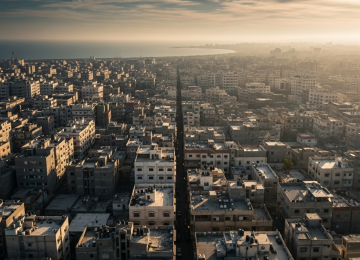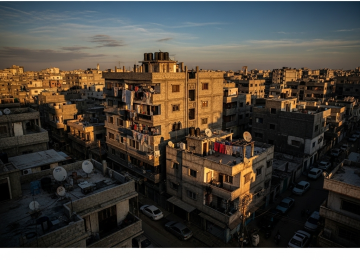Top 5 Reasons for DC Arrests This Year: A Breakdown
Washington D.C., the nation’s capital, is a dynamic and bustling metropolitan area with a unique law enforcement landscape. The factors contributing to the annual count of dc arrests are as complex and varied as the city itself, ranging from large-scale political demonstrations to targeted police initiatives against violent crime. Understanding these statistics requires looking beyond the raw numbers and exploring the specific circumstances that lead to police action. This year has seen a notable shift in arrest patterns, influenced by public safety priorities, social movements, and ongoing efforts to maintain order in a city of immense national importance.
Analyzing arrest data provides a critical snapshot of a city’s social health and law enforcement priorities. In Washington D.C., this data is often scrutinized by policymakers, residents, and the national media. The reasons behind each arrest can tell a story about the challenges facing the community, from spikes in specific types of crime to the outcomes of major public gatherings. Let’s delve into the top five reasons driving arrests in the District this year.
Understanding the Shifting Landscape of DC Arrests
The Metropolitan Police Department (MPD) and several other federal agencies, including the U.S. Capitol Police and the Secret Service, operate within the District. This multi-layered jurisdiction means that arrest data can reflect a wide array of activities. This year’s statistics point to a concentrated effort on specific areas of concern, which is a departure from previous trends. While overall crime rates fluctuate, the focus of enforcement actions provides insight into the city’s primary challenges. Public safety initiatives have been at the forefront of the mayor’s agenda, directly impacting the types of offenses that lead to a higher volume of arrests.

To provide a clear picture, we’ve examined public records, police reports, and news coverage to identify the most significant drivers behind this year’s arrest numbers. These factors highlight both persistent issues and new trends in the capital’s criminal justice system.
The Top 5 Drivers of Arrests in the District
The following list breaks down the primary catalysts for arrests in Washington D.C., based on an analysis of available data and law enforcement priorities for the current year.
- Targeted Violent Crime Enforcement: A significant portion of arrests this year stems from a focused crackdown on violent crime. In response to public concern over a rise in carjackings, armed robberies, and assaults, the MPD has launched several targeted operations. These initiatives often involve increased patrols in high-risk areas and proactive investigations by specialized units. As a result, arrests for offenses involving firearms and violence have become a leading category. This strategic focus is aimed at dismantling criminal networks and reducing the incidence of the most serious crimes affecting residents.
- Protest and First Amendment-Related Activity: As the seat of the federal government, D.C. is a natural hub for protests, demonstrations, and civil disobedience. While most of these events are peaceful, they can lead to a substantial number of arrests for charges such as unlawful assembly, crossing police lines, or failure to disperse. High-profile political events and social justice movements consistently contribute to this statistic, making it a unique and perennial factor in the city’s arrest data.
- Property Crime Offenses: While violent crime often grabs headlines, property crime remains a high-volume reason for arrests. This category includes everything from retail theft and burglary to motor vehicle theft. Police have increased their response to organized retail crime rings and patterns of burglaries in both residential and commercial areas. These arrests are often the result of tips from the public and surveillance footage, reflecting a community-wide effort to combat property loss.
- Narcotics Distribution and Trafficking: Despite evolving laws regarding marijuana possession, arrests related to the distribution and trafficking of illegal narcotics continue to be a significant factor. Law enforcement efforts are primarily focused on disrupting the supply of more dangerous substances like fentanyl, heroin, and cocaine. These investigations are often complex and can lead to multiple arrests connected to a single trafficking operation. For more in-depth reporting on national and local law enforcement trends, you can refer to authoritative sources like the AP News.
- DUI and Serious Traffic Violations: Public safety campaigns to reduce impaired and reckless driving have resulted in a steady stream of arrests. The MPD frequently conducts DUI checkpoints, especially on weekends and holidays, to remove intoxicated drivers from the road. Additionally, a recent focus on “stunt driving” and illegal street racing has led to targeted enforcement actions that result in arrests and vehicle seizures. These efforts are crucial for preventing traffic fatalities and injuries in the city’s congested streets.
The Data Behind the Numbers
It’s important to view arrest statistics within their proper context. A high number of arrests in a particular category does not always correlate directly with a higher incidence of that crime; it can also reflect a shift in police priorities and resource allocation. For example, a spike in protest-related arrests might occur during a year with major national elections or controversial Supreme Court rulings, even if the city’s underlying crime rate remains stable. The data tells a story of enforcement as much as it does of criminal activity.

Furthermore, understanding the demographics and geographic distribution of arrests is key to addressing root causes. Community leaders and policymakers use this information to advocate for resources, from youth programs to mental health services, that can offer alternatives and prevent crime before it happens. True progress lies not just in making arrests, but in creating a safer and more equitable city for all residents.
In conclusion, the reasons for dc arrests are multifaceted, reflecting a combination of persistent crime challenges and specific enforcement strategies. From cracking down on violent offenses to managing large-scale public demonstrations, the city’s law enforcement agencies face a unique and demanding set of responsibilities. By understanding these key drivers, citizens and leaders can better engage in productive conversations about the future of public safety in the nation’s capital. For more analysis on political and social trends, explore the latest content at FunTimesUS.com.















